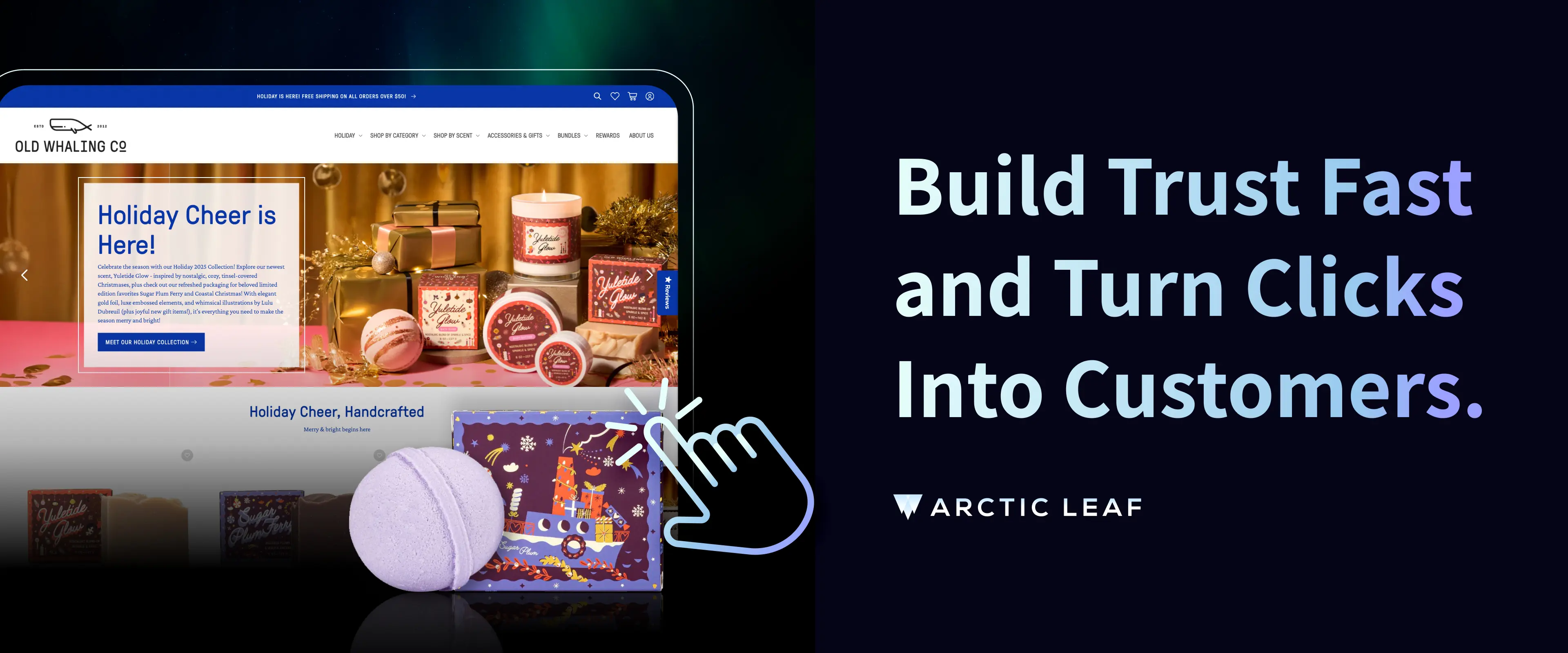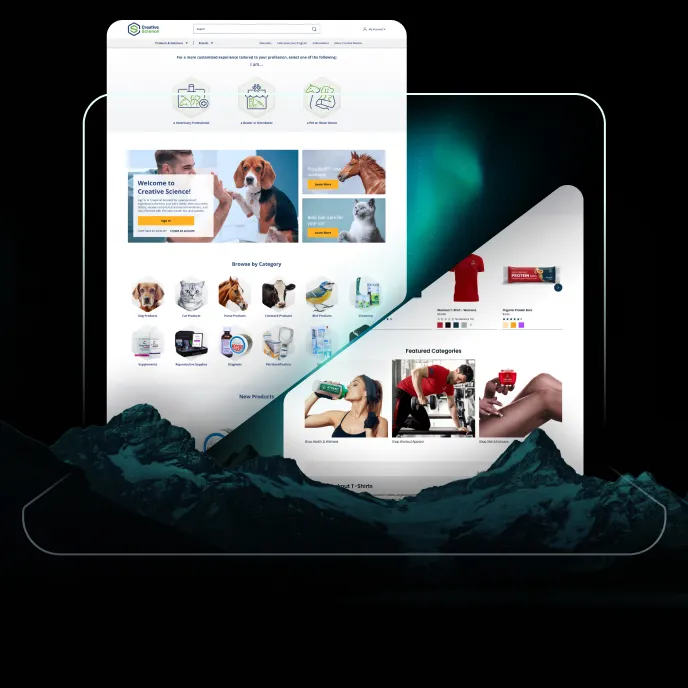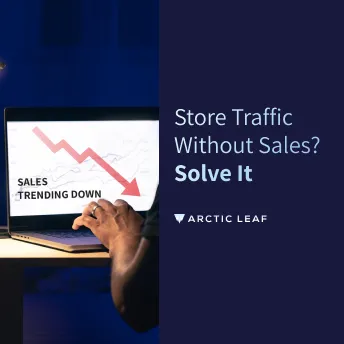5‑Second Homepage Fixes That Convert Traffic to Trust
Key Takeaways
-
You have five seconds or less to convince visitors to stay.
-
Your landing page must match the ad or source that brought users in.
-
A clear homepage structure reduces friction and pushes users to act.
-
Real trust signals like testimonials and UGC help close the sale.
-
Every page should be fast, mobile-first, and easy to follow.
5‑Second Homepage Fixes That Convert Traffic to Trust
Most visitors who land on your Shopify store make up their mind in seconds. Five, to be exact. That’s all the time you get to convince someone you’re worth their attention. The moment they hit your homepage, they’re scanning for answers: What do you sell? Does it matter to them? Can they trust you?
If your Shopify UX design doesn’t deliver those answers clearly and immediately, you lose the click—and the customer.
Here’s how to design a site that stops the scroll, helps you build trust online, and turns traffic into conversions.
The 5-Second Test: Don’t Make Them Think
The second your homepage loads, it needs to speak loud and clear. That means no vague taglines, no confusing visuals, and no walls of text. Just a strong headline that tells the visitor what you do and why they should care. Follow that with a tight subhead and a clear CTA. Don’t give them time to think. Show them exactly where to go next.
It’s true, most visitors who land on your Shopify store make up their mind within five seconds. But research also shows that the initial gut reaction happens even faster, under one second. Every hesitation or unanswered question creates friction. The faster your message lands, the sooner visitors convert.
Shopify’s built-in theme editor lets you test headlines and CTAs quickly across versions to optimize this critical first impression.
Hook Immersion Layering: Match the Moment They Arrived
Let’s say someone taps your ad from Instagram. It promised sleek running shoes built for comfort. But when they land on your site, the visuals feel stiff and the messaging suddenly talks about “lifestyle apparel.” That disconnect kills conversions.
Hook Immersion Layering means aligning your ecommerce landing page with the ad or source that brought the user there. Match the emotional tone, mirror the imagery, and keep the promise. Whether they’re coming from social, email, or search, the page they land on should feel like a natural continuation, not a bait and switch.
Shopify’s native landing page templates and app integrations make it easy to create targeted landing pages that align with specific campaigns.
Homepage Optimization: Layout That Works
There’s a reason the highest-converting Shopify homepages follow a familiar structure. Their focus is reducing friction and guiding the eye.
Start with a clear headline (H1) that says exactly what you offer. Don’t be clever. Be obvious. Follow with a supporting subhead that adds context or benefit. After the hero section, shoppers expect clear visual navigation that maps out the product range. This means category cards or image-based links that show the breadth and type of products available. This gives users strong information scent and reassures them they landed in the right place, inviting them to start browsing with confidence.
Trust signals like testimonials, press features, and satisfaction guarantees should come after these navigation elements. Positioned further down the page, they reinforce credibility once visitors are ready to engage more deeply with the brand. This order respects user expectations and encourages smoother shopping journeys.
Place a CTA front and center; something that leads them to shop, not wander. And finally, show off your bestsellers. You want people moving into the store, not hovering at the door. The goal is simple: remove uncertainty and give them a reason to click again.
Shopify apps like Loox and Judge.me help showcase verified customer reviews with photos to boost social proof right on the homepage.
What Builds Trust Online (And What Doesn’t)
Trust is the difference between window shopping and checkout. You earn it by showing that real people buy from you, talk about you, and love what they got.
-
Testimonials should be short, specific, and ideally include a photo.
-
Press logos act as credibility shortcuts. If GQ or Vogue mentioned you, flaunt it!
-
Make your shipping policy visible and clear. “Ships in 24 hours” is more powerful than a generic “fast shipping.”
-
If you have user-generated content, use it. Photos of real customers using your product beat any polished lifestyle shoot when it comes to closing a sale.
You don’t need to overexplain. You just need to be believable.
Shopify’s Shipping Profiles allow you to set transparent, accurate shipping options that display clearly at checkout and on product pages—reducing abandoned carts caused by surprises.
The Trust Checklist: What Your Homepage and Landing Pages Need
Here’s what every high-performing e-commerce homepage and landing page should include:
-
A headline that’s clear and value-driven
-
Supporting copy that adds context, not clutter
-
Visible trust signals like reviews, press, and guarantees
-
A strong CTA that stands out and sets direction
-
Bestsellers or featured products, above the fold
-
Mobile-first design that loads fast and scrolls smooth
-
Messaging that’s aligned with the user’s entry point
Nail these basics and you won’t just keep visitors—you’ll convert them.
Build Something That Works
At Arctic Leaf, we don’t design for decoration. We design for action. Our suite of custom e-commerce design and development services is built to meet the real needs of growing brands. That includes Shopify UX design, homepage optimization, CRO, full-stack development, and email strategy that performs.
If you’re ready to turn clicks into customers, and traffic into trust, we’re ready to build something that works.





